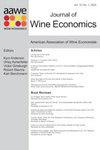应用神经网络模型进行葡萄酒评论分类
IF 1.5
4区 经济学
Q2 AGRICULTURAL ECONOMICS & POLICY
引用次数: 2
摘要
摘要葡萄酒通常由葡萄酒专家和爱好者进行评估,他们会给出数字评级和文字评论。虽然大多数葡萄酒分类研究都是基于使用数字变量的传统统计模型,但使用葡萄酒评论实现神经网络模型的工作非常有限。在本文中,我们应用神经网络模型(CNN、BiLSTM和BERT)从葡萄酒评论中提取有用信息,并根据不同的评级类别对葡萄酒进行分类。该研究使用了《葡萄酒观察家》的大量葡萄酒评论,表明谷歌最近开发的神经网络框架BERT具有最佳性能。在两类分类(90–100和80–89)中,BERT的准确率为89.12%,其次是BiLSTM(88.69%)和CNN(88.02%)。在四类分类(95–100、90–94、85–89和80–84)中,BERT的准确率达到81.57%,而其他两类的准确率则达到80%。本文中的神经网络模型独立于领域知识,因此可以很容易地扩展到其他类型的文本分析。这些模型扩展了葡萄酒文本综述分类研究的有限工作,是最新的,为葡萄酒数据分析提供了有价值的补充。(JEL分类:C45、C88、D83)本文章由计算机程序翻译,如有差异,请以英文原文为准。
Using Neural Network Models for Wine Review Classification
Abstract Wines are usually evaluated by wine experts and enthusiasts who give numeric ratings as well as text reviews. While most wine classification studies have been based on conventional statistical models using numeric variables, there has been very limited work on implementing neural network models using wine reviews. In this paper, we apply neural network models (CNN, BiLSTM, and BERT) to extract useful information from wine reviews and classify wines according to different rating classes. Using a large collection of wine reviews from Wine Spectator, the study shows that BERT, a neural network framework recently developed by Google, has the best performance. In the two-class classification (90–100 and 80–89), BERT achieves an accuracy of 89.12%, followed by BiLSTM (88.69%) and CNN (88.02%). In the four-class classification (95–100, 90–94, 85–89, and 80–84), BERT yields an 81.57% accuracy, while the other two produce an 80% accuracy. The neural network models in the paper are independent of domain knowledge and thus can be easily extended to other kinds of text analysis. Expanding the limited work on wine text review classification studies, these models are up-to-date and provide valuable additions to wine data analysis. (JEL Classifications: C45, C88, D83)
求助全文
通过发布文献求助,成功后即可免费获取论文全文。
去求助
来源期刊

Journal of Wine Economics
Agricultural and Biological Sciences-Food Science
CiteScore
3.20
自引率
28.60%
发文量
33
期刊介绍:
The Journal of Wine Economics (JWE), launched in 2006, provides a focused outlet for high-quality, peer-reviewed research on economic topics related to wine. Although wine economics papers have been, and will continue to be, published in leading general and agricultural economics journals, the number of high-quality papers has grown to such an extent that a specialized journal can provide a useful platform for the exchange of ideas and results.
The JWE is open to any area related to the economic aspects of wine, viticulture, and oenology. It covers a wide array of topics, including, but not limited to: production, winery activities, marketing, consumption, as well as macroeconomic and legal topics. The JWE has been published twice a year and contains main papers, short papers, notes and comments, reviews of books, films and wine events, as well as conference announcements. From 2013 on, the JWE has been published three times per year.
The Journal of Wine Economics is fully owned by the American Association of Wine Economists (AAWE) and, since 2012, has been published by Cambridge University Press.
 求助内容:
求助内容: 应助结果提醒方式:
应助结果提醒方式:


